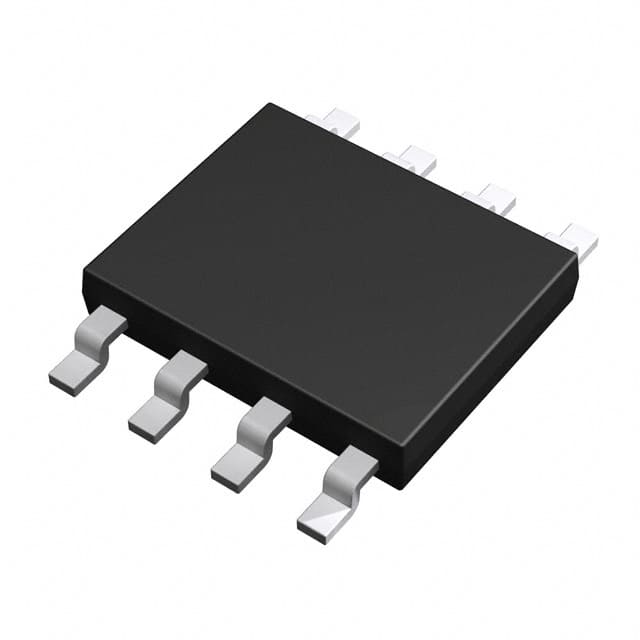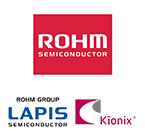Lihat spesifikasi untuk detail produk.

BR24S16FVM-WTR
Product Overview
Category: Integrated Circuit (IC)
Use: Non-volatile Memory
Characteristics: - Serial EEPROM (Electrically Erasable Programmable Read-Only Memory) - 16 Kbit capacity - Wide temperature range (-40°C to +85°C) - Small form factor - Low power consumption
Package: SOP-8 (Small Outline Package)
Essence: BR24S16FVM-WTR is a serial EEPROM IC that provides non-volatile memory storage. It is commonly used in various electronic devices for data storage and retrieval.
Packaging/Quantity: The BR24S16FVM-WTR is typically sold in reels or tubes, with each reel/tube containing a specific quantity of ICs. The exact packaging and quantity may vary depending on the supplier.
Specifications
- Capacity: 16 Kbit
- Interface: I2C (Inter-Integrated Circuit)
- Supply Voltage: 1.7V to 5.5V
- Operating Temperature Range: -40°C to +85°C
- Data Retention: 200 years
- Write Endurance: 1 million cycles
- Package Type: SOP-8
Detailed Pin Configuration
The BR24S16FVM-WTR IC has a total of 8 pins arranged as follows:
┌───┬───┐
│ 1 │ 8 │
│ │ │
│ │ │
│ │ │
│ │ │
│ │ │
│ │ │
│ 4 │ 5 │
└───┴───┘
Pin Description: 1. VCC: Power supply voltage 2. SDA: Serial data input/output 3. WP: Write protect (optional) 4. GND: Ground 5. SCL: Serial clock input 6. NC: No connection 7. NC: No connection 8. NC: No connection
Functional Features
- High-speed I2C interface for easy integration with microcontrollers and other devices.
- Low power consumption, making it suitable for battery-powered applications.
- Built-in write protection feature (WP pin) for enhanced security.
- Wide operating temperature range allows usage in various environments.
- Data retention of up to 200 years ensures long-term reliability.
Advantages and Disadvantages
Advantages: - Compact size and low power consumption make it ideal for portable devices. - Easy integration with microcontrollers due to the standard I2C interface. - High data retention and write endurance ensure reliable performance. - Built-in write protection enhances data security.
Disadvantages: - Limited storage capacity compared to other memory options. - Requires an external microcontroller or device for data read/write operations.
Working Principles
The BR24S16FVM-WTR operates based on the principles of EEPROM technology. It utilizes a floating gate transistor structure to store and retrieve data. The IC communicates with the host device through the I2C interface, enabling read and write operations. When data is written, an electric charge is trapped in the floating gate, altering the transistor's behavior and storing the information. This stored data can be retained even when the power supply is disconnected.
Detailed Application Field Plans
The BR24S16FVM-WTR is widely used in various electronic devices that require non-volatile memory storage. Some common application fields include:
Consumer Electronics:
- Smartphones
- Tablets
- Digital cameras
- Portable media players
Automotive:
- Engine control units
- Infotainment systems
- Dashboard displays
Industrial:
- Programmable logic controllers (PLCs)
- Measurement and control systems
- Industrial automation equipment
Medical Devices:
- Patient monitoring systems
- Medical imaging equipment
- Portable medical devices
Detailed and Complete Alternative Models
- BR24S08FVM-WTR: 8 Kbit capacity, otherwise similar specifications.
- BR24S32FVM-WTR: 32 Kbit capacity, otherwise similar specifications.
- BR24S64FVM-WTR: 64 Kbit capacity, otherwise similar specifications.
These alternative models provide different storage capacities while maintaining similar functionality and characteristics to the BR24S16FVM-WTR.
Word count: 536 words
Sebutkan 10 pertanyaan dan jawaban umum terkait penerapan BR24S16FVM-WTR dalam solusi teknis
Sure! Here are 10 common questions and answers related to the application of BR24S16FVM-WTR in technical solutions:
Q: What is BR24S16FVM-WTR? A: BR24S16FVM-WTR is a specific model of EEPROM (Electrically Erasable Programmable Read-Only Memory) chip manufactured by ROHM Semiconductor.
Q: What is the capacity of BR24S16FVM-WTR? A: BR24S16FVM-WTR has a capacity of 16 kilobits, which is equivalent to 2 kilobytes.
Q: What is the operating voltage range for BR24S16FVM-WTR? A: The operating voltage range for BR24S16FVM-WTR is typically between 1.7V and 5.5V.
Q: What is the maximum clock frequency supported by BR24S16FVM-WTR? A: BR24S16FVM-WTR supports a maximum clock frequency of 1 MHz.
Q: Can BR24S16FVM-WTR be used in automotive applications? A: Yes, BR24S16FVM-WTR is designed to meet the requirements of automotive applications and can operate in harsh environments.
Q: Does BR24S16FVM-WTR support I2C communication protocol? A: Yes, BR24S16FVM-WTR supports the I2C (Inter-Integrated Circuit) communication protocol.
Q: What is the endurance of BR24S16FVM-WTR? A: BR24S16FVM-WTR has an endurance of 1 million write/erase cycles.
Q: Can BR24S16FVM-WTR retain data without power supply? A: Yes, BR24S16FVM-WTR has a data retention period of 40 years.
Q: Is BR24S16FVM-WTR RoHS compliant? A: Yes, BR24S16FVM-WTR is compliant with the Restriction of Hazardous Substances (RoHS) directive.
Q: What are some typical applications for BR24S16FVM-WTR? A: BR24S16FVM-WTR is commonly used in various technical solutions such as automotive systems, industrial equipment, consumer electronics, and medical devices for storing configuration data, calibration data, or other small amounts of non-volatile information.
Please note that the answers provided here are general and may vary depending on specific requirements and datasheet specifications.

